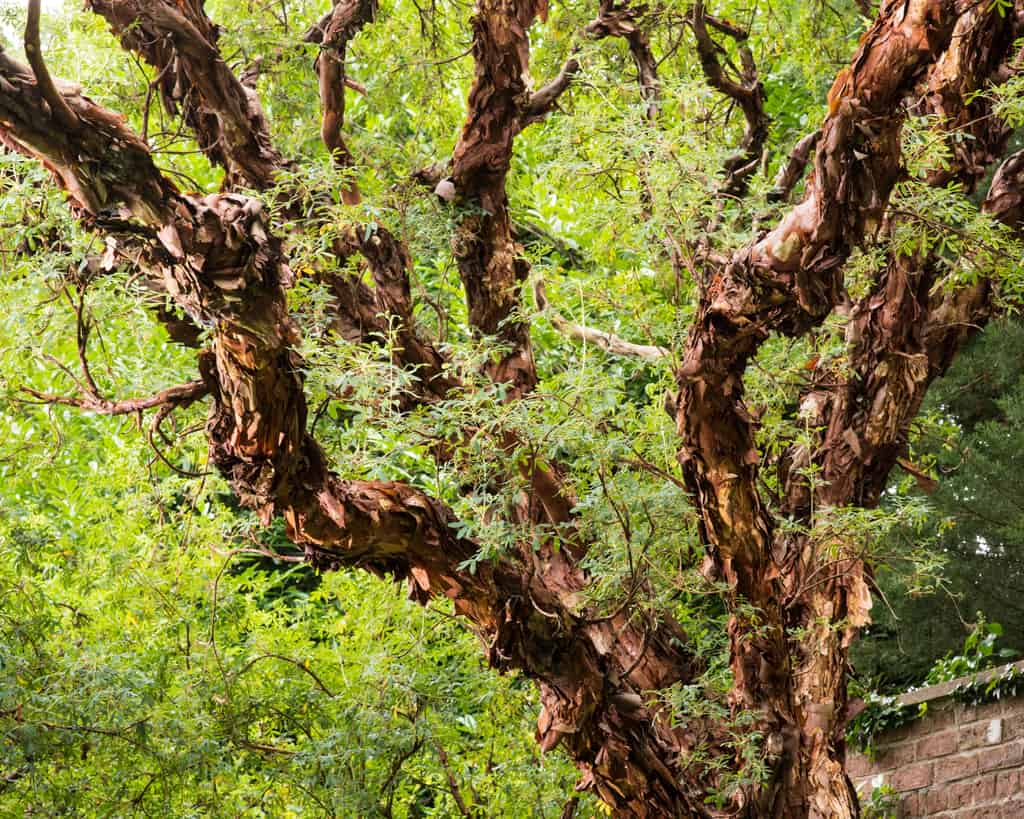A tree growing at Logan Botanic Garden, near Stranraer, Dumfries and Galloway and nicknamed the “Filo Pastry Tree’’ because of its amazing peeling bark, has just won through to the final of a top competition.
It was a casual remark by a Stranraer Academy pupil that led to one of the Garden’s most unusual specimens, the Polylepis australis, being named the ‘Filo Pastry Tree’. The pupil said the distinctive flaky bark reminded him of the spring rolls he had eaten the previous day and he came up with the name ‘Filo Pastry Tree’.
Now several years on, the Polylepis australis located in Logan’s Walled Garden has won through to the final of the Scottish Tree of the Year contest organised by the Woodland Trust. People are being asked to vote for their favourite tree via the Woodland Trust’s website on or before 7 October.
Curator at Logan, Richard Baines said he hoped the public would vote for the Filo Pastry Tree and commented: “Planted over 40 years ago, this remarkable genus is one of the highest growing woody trees on the planet. It is endemic to Central Argentina, where it is locally called ‘tabaquillo’. Its main ornamental feature is its brown flaky bark, which peels away in layers from the contorted trunk and branches in rolls similar to filo pastry.
“The peeling bark feature has evolved as an adaption for coping with the harsh Andean winters. Working in a similar manner as humans wearing two jumpers on a cold winter’s day it traps warm air between the layers to keep it warm throughout the night.’’
Mr Baines added: “The peeling bark creates a great home for insects and these crevices are regular haunts for birds such as blue tits. The layered effect also creates ideal nesting sites for wrens, tits and other birds.
In terms of comparisons its unusual bark it leaves other rivals such as Acer Griseum and Betula jacquemontii clearly in the shade. Surprisingly, a member of the Rose family Rosaceae, the genus contains 20 species all of which are found in South America.’’
In the wild Polylepis australis grows at altitudes up to 3000m above sea level often in sheltered ravines.
The tree was introduced to Europe in the 1940’s and the Logan’s specimen has the unofficial status of being the UK champion as the largest of its species in the UK.
As it has adapted to survive the cold Andean winters it is an excellent tree for British gardens. Although only usually observed in west coast gardens the plant has withstood -16 in SW Scotland.
The other five finalists for Scottish Tree of the Year are the Flodden Tree, Hirsel Estate, Scottish Borders; Malloch’s Oak, Strathallan Castle; the Ecclefechan Tree; Netty’s Tree on Eriskay and the Camperdown Elm, near Dundee. Voting is via the Woodland Trust website HERE on or before Sunday, 7 October.






